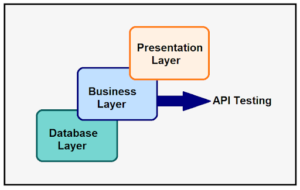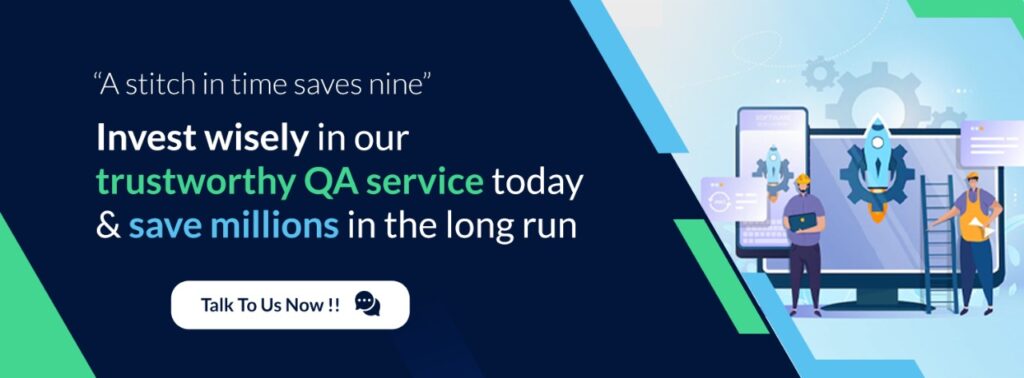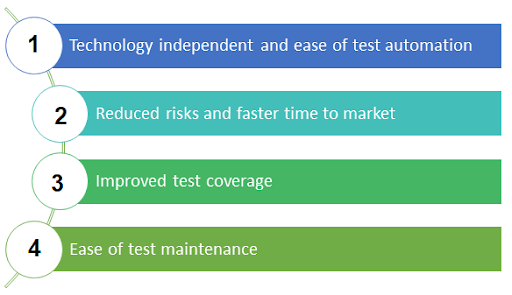
An application programming interface (API) is a computing interface that defines interactions between multiple software intermediaries. It defines the kinds of calls or requests that can be made, how to make them, the data formats that should be used, the conventions to follow, etc. (Source: Wikipedia)
API’s help not only in abstracting the underlying implementation but also improves the modularity and scalability of software applications. APIs encompass the business and functional logic and are a gateway to sensitive data and expose only objects & actions that are needed.
API testing deals with testing the business logic of an application, which is typically encompassed in the business layer and is instrumental in handling all the transactions between the user interface and underlying data. It is deemed as a part of Integration testing that involves verification of functionality, performance, and robustness of APIs.

Besides checking for the functionality, API testing also tests for error condition handling, response handling in terms of time and data, performance issues, security issues, etc.
API testing also deals with contract testing, which in simpler terms, is verifying the compatibility and interactions between different services. The contract is between a client/consumer and API/service provider.
Clearly, API’s usage is not limited to just one application and in some cases, they can be used across many applications and are also used for third party integrations. Hence, developing and testing them thoroughly is extremely critical.
The following section highlights why thorough API testing entails many benefits in the long run.


These benefits are discussed in detail below.



API test automation helps in covering a high number of test cases, functional and non-functional. Also, for a complete scenario check API testing requires to run both, positive and negative tests. Since API testing is a data-driven approach, various combinations of data inputs can be used to test such test cases. This gives good test coverage overall.
Good test coverage helps in identifying and managing defects in a larger scenario. As a result, miniscule bugs make way to production, thus resulting in a higher quality product.

Also, it is a good idea to categorize the test cases for better test case management since the number of API’s involved in any application can be large. We have talked about this in our earlier blog “Do’s and Don’ts of API testing”.
APIs evolve and develop as and when business and functional requirements change, thus making it even more important to test them on a continuous basis.
Webomates test APIs using Manual and Automation testing. Webomates provides API testing which focuses on Performance and Security Testing to make sure the application is secure and giving the application a strong backbone.
You can take a quick look at the following table to see which tools are already integrated in our Testing as a Service platform.
| Manual API testing | Automated API Testing |
| Postman | Jersey RESTful Web Services |
| Rest Assured | POSTMAN |
| Swagger | Rest Assured |
| JMeter | JMeter |
| Any REST client or dev tool | Swagger |
| API Fortress |
At Webomates, we continuously work to evolve our platform and processes in order to provide guaranteed execution, which takes testing experience to an entirely different level, thus ensuring a higher degree of customer satisfaction.
Webomates offers regression testing as a service that is a combination of test cases based testing and exploratory testing. Test cases based testing establishes a baseline and uses a multi-execution channel approach, to reach true pass / true fail, using AI Automation, automation, manual, and crowdsourcing. Exploratory testing expands the scope of the test to take the quality to the next level. Service is guaranteed to do both and even covers updating test cases of modified features during execution in 24 hours.
If you are interested in learning more about Webomates’ CQ service please click here and schedule a demo, or reach out to us at info@webomates.com
Tags: API Testing, Postman, REST API, Swagger
Test Smarter, Not Harder: Get Your Free Trial Today!
Start Free Trial
Leave a Reply